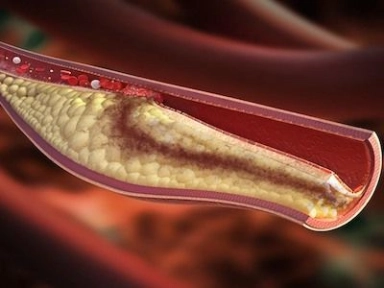{
event: "article_read",
name: `Acute Medical Illness: Advanced Age Alone Predicts Venous Thromboembolism Similar to Existing Risk Assessment Models`,
author: ``,
tags: `Thrombosis`,
publication_date: ``,
interaction_type: "content"
}
Acute Medical Illness: Advanced Age Alone Predicts Venous Thromboembolism Similar to Existing Risk Assessment Models
Advanced age alone might be an alternative to complex models in predicting venous thromboembolism among medical inpatients.
Takeaway
-
Padua, Caprini and International Medical Prevention Registry on Venous Thromboembolism (IMPROVE) risk assessment models (RAMs) had poor discriminating ability to predict venous thromboembolism (VTE) in acutely ill medical inpatients.
- Findings from this secondary analysis of PREVENU study suggest that none of these RAMs provided a better prediction than advanced age alone.
- Using an age above 70 years might be the easiest and most practical way of identifying medical inpatients requiring thromboprophylaxis.
Why This Matters
-
International consensus is lacking on criteria for thromboprophylaxis in medical inpatients.
- A strategy based on age alone is easily implementable in regular clinical practice.
Study Design
-
This retrospective study included 14,910 patients (median age, 73 years) from Prevenu trial who were hospitalised for acute medical illnesses in a medical ward for at least 2 days.
- Critically ill patients were excluded.
- The primary aim was to assess the global discriminatory power of the RAMs in predicting VTE in comparison with advanced age alone.
- The secondary aim was to compare the incidence of VTE between low- and high-risk patients and assess the robustness of primary results.
- Patients with a Padua score ≥4, Caprini score ≥3, IMPROVE score ≥2 (intermediate and high risk) and IMPROVE score ≥4 (high risk) were considered at an increased risk for VTE.
- Advanced age was defined as reaching 70 years, as defined in the Padua score.
- Funding: None.
Key Results
-
Overall, 1.8% of patients experienced symptomatic VTE during follow-up.
- The median time until VTE occurrence was 22 (interquartile range, 10-46) days.
- The area under curve (AUC) of predicting VTE was 0.61 (95% CI, 0.58-0.64) for advanced age alone.
- None of the 3 RAMs had a significantly different AUC compared with advanced age alone for predicting VTE (P=0.284):
- Padua: 0.64 (95% CI, 0.61-0.67);
- IMPROVE: 0.63 (95% CI, 0.60-0.66); and
- Caprini: 0.60 (95% CI, 0.57-0.63).
- In low-risk patients, VTE incidence was 0.6%, 0.5%, 1.0%, 1.6% and 1.2%, according to Padua, Caprini, IMPROVE intermediate-high score, IMPROVE high score and advanced age, respectively.
- In high-risk patients, VTE incidence was 2.2%, 1.9%, 2.5%, 3.0% and 2.3% according to Padua, Caprini, IMPROVE intermediate-high score, IMPROVE high score and advanced age, respectively.
- Global performances were poor for 3 RAMs and advanced age (Youden Index for all, <0.25%).
- After excluding patients who received anticoagulant prophylaxis during their hospital stay, the AUC of predicting VTE was 0.66 (95% CI, 0.62-0.70) for advanced age and not significantly different for the RAMs (P=0.266).
- Moumneh T, Riou J, Douillet D, Henni S, Mottier D, Tritschler T, Le Gal G, Roy PM. Validation of risk assessment models predicting venous thromboembolism in acutely ill medical inpatients: A cohort study. J Thromb Haemost. 2020;18(6):1398-1407. doi: 10.1111/jth.14796. PMID: 32168402
Related articles
MAT-BH-2300402/v1/Jun 2023




